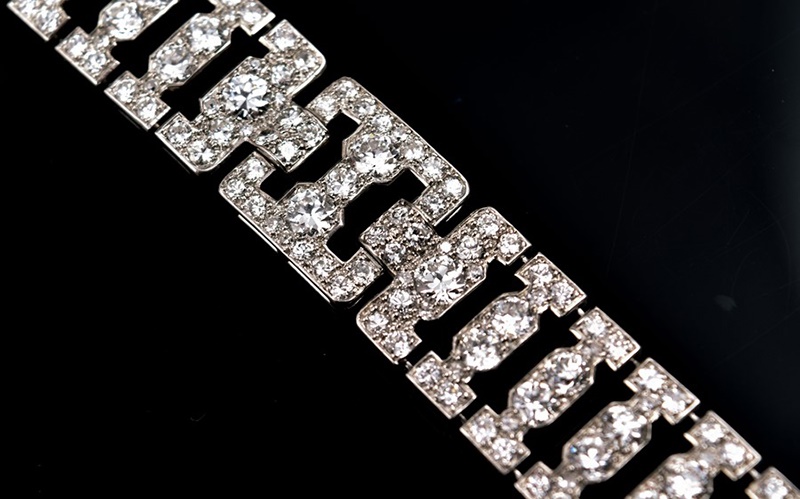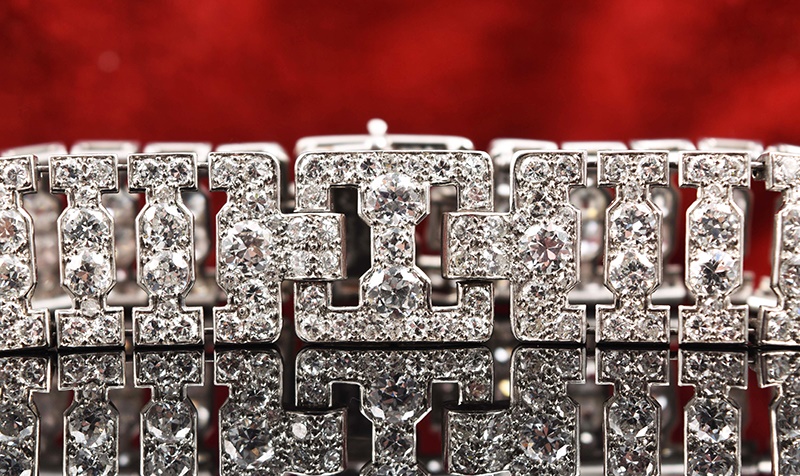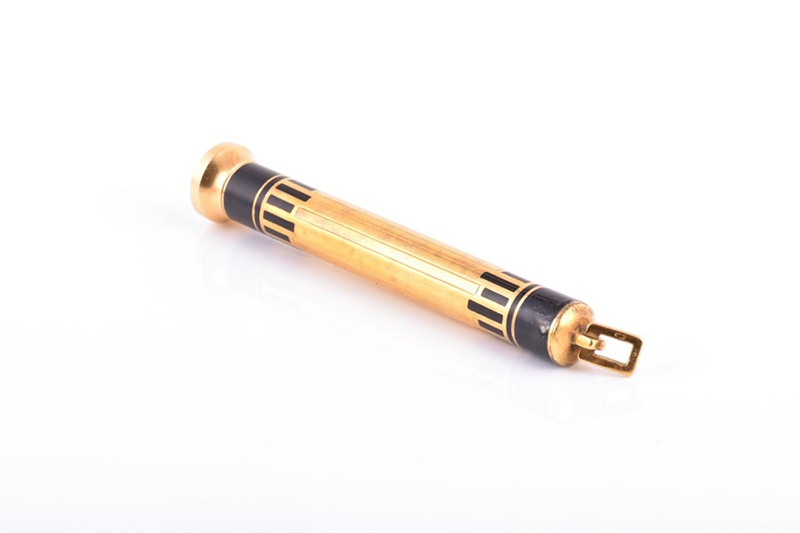A Complete Guide to Cartier Art Deco Jewellery
A closer look at one of the formidable brands of the period
28/09/2023
“As the 1920s dawned, Louis, in his early forties now, was nearing the peak of his creative powers. With his workforce returned from the war, he was freed up to focus on new innovation. In mid-November 1919, the first Tank watch models were entered into the stock register, with a total of six pieces built to mark the start of the esteemed new line. Next on the list was the geometrical style of jewelry that he and his protégé, Charles Jacqueau, had been pursuing before the war broke out. Back then they had planned to exhibit a selection of their modern designs for the planned 1915 Arts Décoratifs exhibition. With the war, the exhibition had been postponed, but now back at their desks, they were eager to pick up where they left off. Women were demanding something more avant-garde, and Louis felt sure that this new Art Deco style was the way forward. Change was in the air.” – Cartier Brickell, Francesca, 2019, The Untold Story of the family behind the jewellery empire The Cartiers, p. 100 – 101.
Cartier, London. An Art Deco diamond bracelet
“Never copy, only create.” Louis Cartier went on to exhibit 150 Art Moderne pieces at the Exposition Internationale des Arts Décoratifs et Industriels Modernes in 1925, capturing a huge amount of attention. The jewellery and accessories produced by Cartier in the 1920s and 1930s are representative of an intrinsic understanding of symmetry, proportion, and colour, defining the Art Deco movement, and remain some of the most exceptional examples ever produced. It is worth noting that the term “Art Deco” was only conceived in the 1960s.
“We must make…articles that have a useful function…decorated in the Cartier style” – Louis Cartier.
A Cartier Art Deco yellow metal telescopic propelling pencil
The Great War (World War 1, 1914-18) was over, and people were celebrating. Pre-war, women wearing makeup or smoking in public was frowned upon, but the 20s was a new era, applying makeup in public and smoking emerged as fashionable displays of independence. Compacts, vanity cases and cigarette boxes became the rage. Fashion designers like Coco Chanel and Jeanne Lanvin adapted for the modern woman, with shorter dresses and non-existent waistlines, a far more comfortable trend emerged with women becoming partial to practical clothing. Short bob haircuts resulted in heavy updos’ and tiaras being replaced with discreet bandeaux, thinner fabrics demanded more lightweight brooches and long necklaces replaced chokers.
Cartier produced pieces with linear clear lines, flexible geometric designs, bold, colourful, and unorthodox combinations with influences ranging from Cubism, Persian and Asian, to Indian and Egyptian. Geometric shapes replaced frills and garlands while deep red Burmese rubies were set with vivid green emeralds and splashes of blue sapphires, highlighted with black onyx, and contrasting pure white diamonds. Platinum was the metal of choice owing to the hardness and the colour which enhanced the bold colours of the gems. Hair clips, mystery clocks, objets d’art and jewellery were all created using a variety of materials including jade, ivory, lapis, rock crystal, coral, enamel, lacquer, pearls, horn, glass, gold, and carved mother of pearl.
Jacques, the youngest Cartier brother, had been intrigued by Egypt ever since his first visit in 1911. He studied history books for many years drawing inspiration from old Egyptian symbols. Following the hysteria that ensued when King Tutankhamun’s tomb was unearthed in 1922, Cartier developed relationships with artefact traders and antique shops to source genuine ancient Egyptian artefacts. Jacques would then enhance these pieces for modern style with very careful forethought and extraordinary attention to detail, the result was totally unique and incredible. The pieces were produced in limited supply (approximately 150), and each was one of a kind. Jacques’ Egyptian revival jewellery would be another key pillar of Art Deco jewellery design.
The Tutti Frutti jewellery produced during this time, was only named as such in the 1970s. Jacques referred to them as his Indian or Hindou jewels. Featuring carved gemstones from the East, he had been more interested in the colours than the purity, making the gems more affordable than finer quality specimens. Singer sewing machine heiress, Daisy Fellowes, commissioned the Collier Hindou in 1936. Composed of carved sapphires, emeralds, rubies, and diamonds, it is one of the most spectacular examples of the Tutti Frutti range.

When the Great Depression took hold of markets in late 1929, Cartier endeavoured to create more affordable pieces. Louis embraced the machine age creating more machine-like pieces, gold cufflinks with ball and rib details, silver and gold ball drop earrings, and engine turned patterns. Cartier spent years secretly buying up sources of good quality aquamarine and topaz, which they used to create more accessible masterpieces for their financially challenged clients.
Each Cartier Art Deco piece features multiple aspects of the period’s reigning aesthetic and can often encapsulate this in a single example, which makes the allure even more prominent. The Art Deco period is one of the most memorable and trendsetting eras in jewellery design, and Cartier was one of the formidable brands of the time. 1939 saw the beginning of a second devasting global conflict, World War II, and so ended the iconic Art Deco period.
read more
Does Cartier Jewellery Hold its Value?
How Do I Identify Art Deco Jewellery?

Nicky Houston
Our Head of Jewellery, Watches & Silver... Nicky is a highly respected Auctioneer & Valuer, who had dreams of becoming an artist. Whilst she may not have made it as a successful artist herself, Nicky has helped many a customer to successfully sell and buy beautiful pieces of jewellery and works of art over her many years working within the auction industry.
Jewellery Silver & Objects of Virtue Watches
Do you have any Cartier Art Deco jewellery that you are considering selling?
With a global audience of over 10 million active bidders, we can ensure you achieve the best price.
Please get in touch for sales advice today, our Specialists would be delighted to help.

